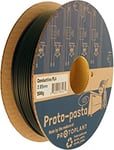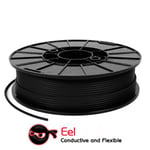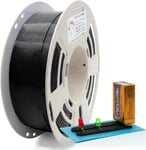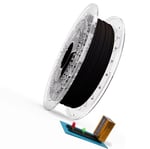Conductive filament is an emerging material type that’s great for small DIY electronic projects or small circuits. Conductive means that electricity can flow through it, hence the filament’s usefulness in projects like key fobs, LED gloves, and even touch sensors.
This filament often has PLA as a base material, but other materials (ABS, for example) are also used. Most – if not all – conductive filaments contain graphitized carbon material or graphene, among other additives, which establish the filament’s conductivity.
In this article, we’ll discuss a little bit of the science behind conductive filament, its applications, and some of the best brands available to buy.
The Basics

Conductive PLA needs a power source (like a battery) to transfer electricity. Although the filament can handle electricity, we recommend that you don’t test its limits, as burning the plastic can release carcinogens. Electrical stress tests have shown that conductive PLA can handle 0 to 60 volts at or under 100 mA, but this varies depending on the brand.
Although the filament can’t power your house, it can help with small projects, such as custom PCBs, circuits, or electronic components that can power small devices, for example, LED lights or sensors. We say “small” here because conductive PLA can only handle low-voltage devices. And by that, we mean projects that don’t draw or require a lot of power to function. It’s important to keep this in mind when considering applications.
Voltage & Resistivity
Some conductive filaments are more equipped than others for handling certain voltages. For this reason, we’ll compare products according to their level of electrical resistivity, which is an inverse measurement of conductivity.
Many who are familiar with electronics will already know resistance (measured in Ω), which is a fixed, component-specific value. On the other hand, resistivity (measured in Ω·m) is a more general measure, describing how well a material resists the flow of current. The resistance of an object depends on the object’s resistivity and dimensions:
R = ρ(l/A)
where ρ is resistivity, l is the length of the object, and A is the object’s cross-sectional area. Thus, a 100-Ω resistor may have 100 Ω of resistance, but the material it’s made of could have any value for its resistivity.
Math aside, all you really need to know for the purposes of this article is that the lower the resistivity, the more conductive a filament is, and vice versa. Also, we’ll be presenting resistivity in terms of Ω⋅cm, which is what’s most often provided by manufacturers.
Comparing Resistivity
The filaments on this list have a wide range of resistivity, so make sure you know what you’re getting before buying. To help you gauge the significance of certain values, here are a few examples:
- Copper: 0.00000168 Ω⋅cm (highly conductive)
- Drinking water: 2,000-20,000 Ω⋅cm (conductive)
- Silicon: 230,000 Ω⋅cm (semi-conductive)
- Hard rubber: 1,000,000,000,000,000 Ω⋅cm (non-conductive)
It’s also important to know that a print using conductive filament may not be uniformly conductive along every axis. This is due to the fact that the material is printed continuously in the XY-plane, but layered in the Z direction. Thus, the material’s molecules will be in better contact in the former case. To yield the best conductivity, keep this in mind as you decide how to orient a part.
Now that you know some electrical information, let’s get to these shocking filaments!
Protopasta
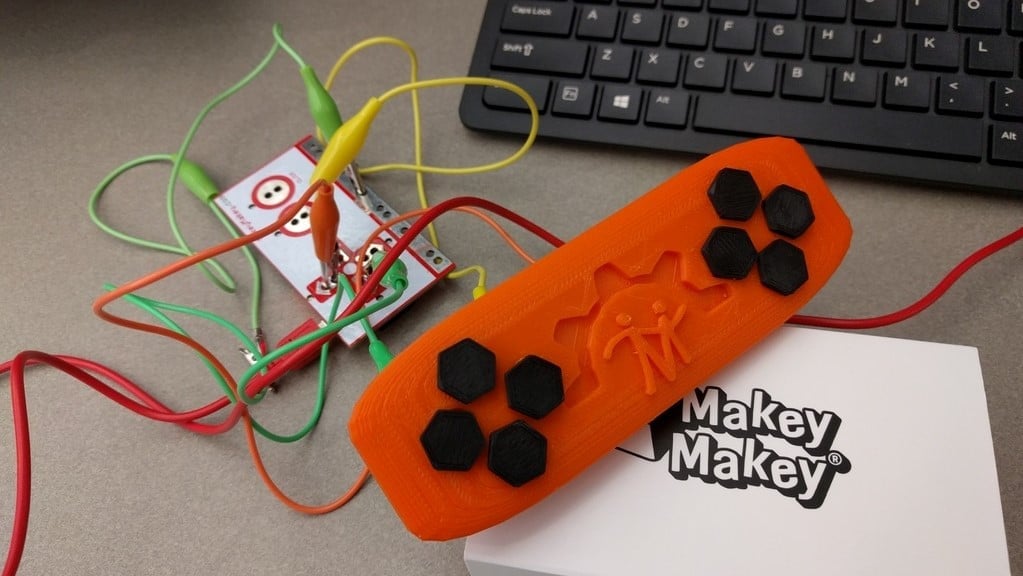
Protopasta is a popular filament manufacturer known for its premium-quality filaments that have different finishes: matte, shiny, translucent, and opaque, among others. They’ve also released their own conductive PLA filament, which was developed thanks to crowdsourcing on Kickstarter.
According to the manufacturer, Proropasta’s conductive PLA has a resistivity of 30 Ω⋅cm along the X- and Y-axes and 115 Ω⋅cm along the Z-axis. The filament has a 4.7-star rating on Protopasta’s website. Multiple customers credited the filament for printing just as easy as regular PLA, but one customer reported that they experienced issues with the filament’s conductivity.
You can watch this filament review or this project review posted by Adafruit to learn more about this filament.
- Price/kg: ∼$90
- Sizes: 1.75 mm, 2.85 mm
- Resistivity: 15 Ω⋅cm
- Nozzle temperature: 215-230 °C
- Bed temperature: 50 °C
NinjaTek
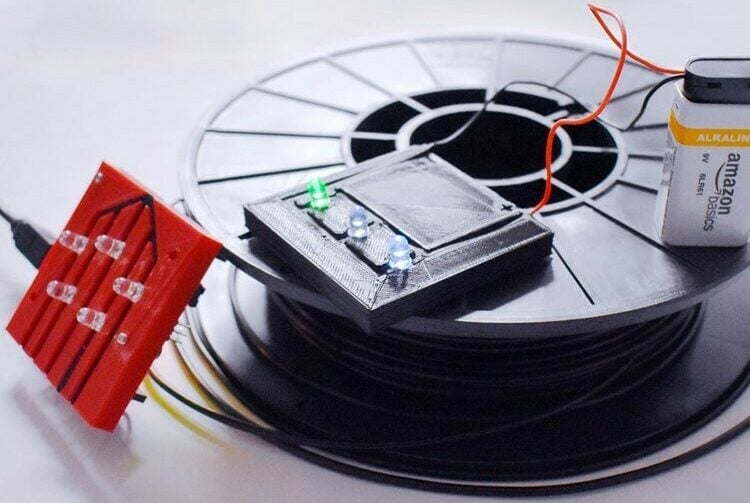
NinjaTek is a filament manufacturer that’s perhaps most known for their super flexible and popular NinjaFlex filament. However, the company also makes other types of filament, such as NinjaTek Eel, a conductive TPU. The filament only comes in one color (Midnight Black), and while it’s not cheap, it’s got some properties that might make the high price tag worth it.
As TPU is the base material for Eel, it comes as no surprise that the filament is flexible. According to NinjaTek, the filament offers 355% elongation and a 90A Shore hardness rating, so parts printed in this material shouldn’t break, crack, or wear when bent or twisted.
As for conductivity, NinjaTek didn’t provide the resistivity for the filament across different axes. However, the company did state in the filament’s technical data sheet that Eel yielded a volume and surface resistance of 1.5 x 103. Furthermore, you should be able to use Eel to print components for small electronic projects, like making a light, as one user successfully did with this filament.
- Price/kg: ∼$155
- Sizes: 1.75 mm, 3.00 mm
- Resistivity: Not specified
- Nozzle temperature: 220-230 °C
- Bed temperature: 45 °C (glue is suggested)
Reprapper
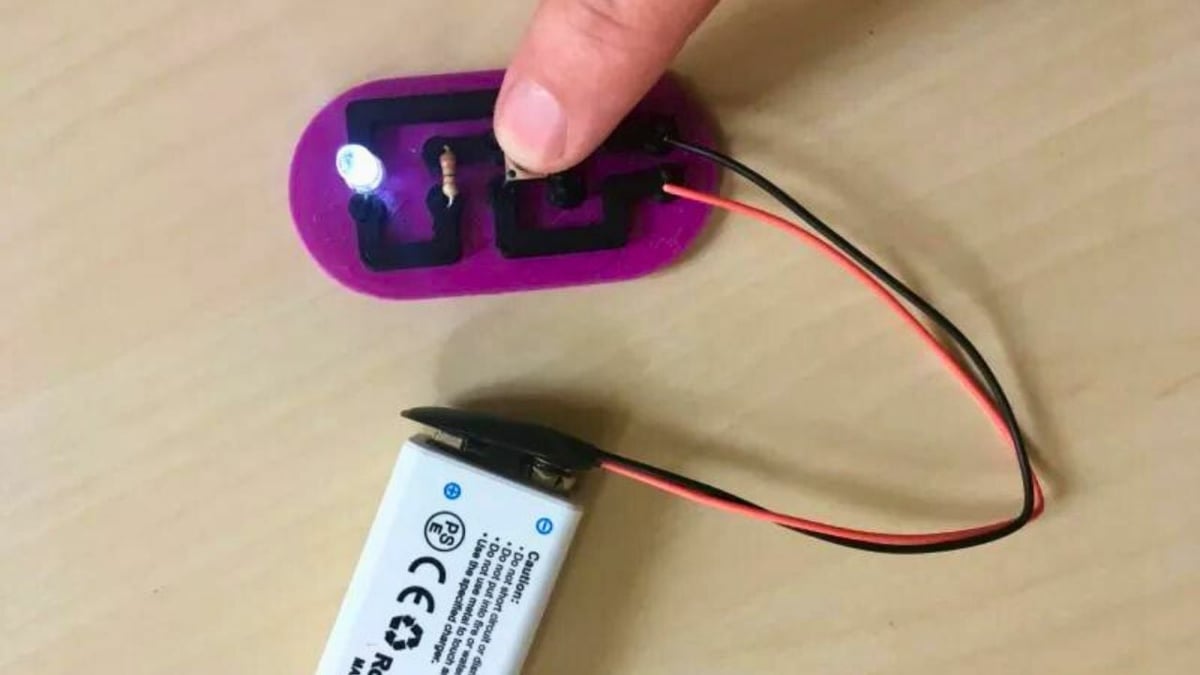
In the last decade, Reprapper has become a well-known name in the world of specialized 3D printing filament manufacturers. Their range includes specialty materials such as water-washable resin, multi-color filament, glow-in-the-dark filament, and, more recently, conductive filaments.
There are two conductive filament options available: Conductive PLA for projects requiring stiffness and a new conductive TPU filament for projects requiring flexibility and strength. While each filament offers different possibilities, it’s important to note that specific resistivity values are not provided.
Although Reprapper’s filaments are among the most affordable options available, they have limitations. These filaments are best suited for crafting small-scale LED circuits, engineering touch-capacitive devices, and handling low electrostatic discharge (ESD) tasks. Not to mention that some users have also noted that these filaments have higher resistivity than expected, limiting their suitability for more demanding projects.
- Price/kg: ∼$50 (PLA); ~$60 (TPU)
- Sizes: 1.75 mm
- Resistivity: Not specified
- Resistivity per axis: Not specified
- Nozzle temperature: 190-240 °C (PLA); 220-240 °C (TPU)
- Bed temperature: 40-60 °C
Recreus
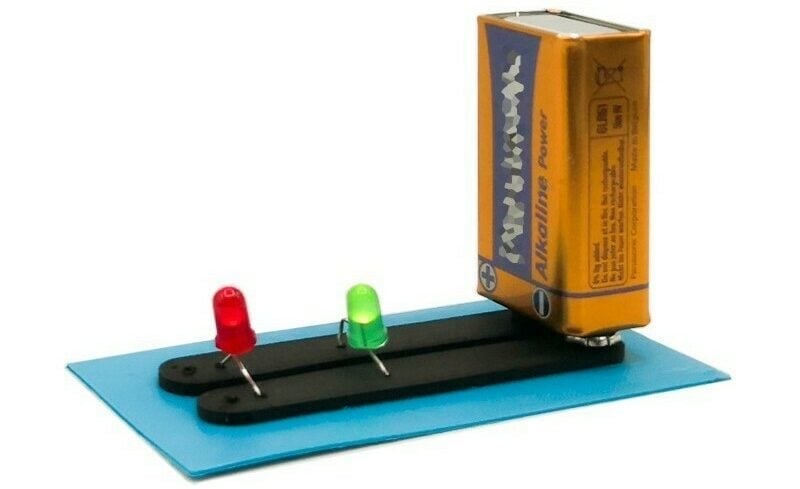
Recreus is yet another company that develops 3D printing filaments, and while they sell a few filament materials, they are most well-known for their flexible and TPU-based Filaflex filaments. Filaflex is available in a couple of options that vary in flexibility, and there’s also a conductive version, known simply as Conductive Filaflex.
According to Recreus, Conductive Filaflex has a Shore hardness rating of 92A, which is a lot less flexible than some of the other versions of Filaflex. However, this level of flexibility should still allow you to easily bend and twist prints without them breaking.
As for the filament’s conductivity, Recreus states that Conductive Filaflex has a resistivity of 3.9 Ω⋅cm and works great for use as electrical tracks for LEDs, joysticks, and other small devices. Printing the filament also shouldn’t be too difficult, but the required nozzle temperature is somewhat high. One user review also mentions that you have to turn off the fan and print slowly to achieve high-quality prints.
- Price/kg: ∼$150
- Sizes: 1.75 mm, 2.85 mm
- Resistivity: 3.9 Ω⋅cm
- Nozzle temperature: 245-250 °C
- Bed temperature: 50-60 °C
Yousu
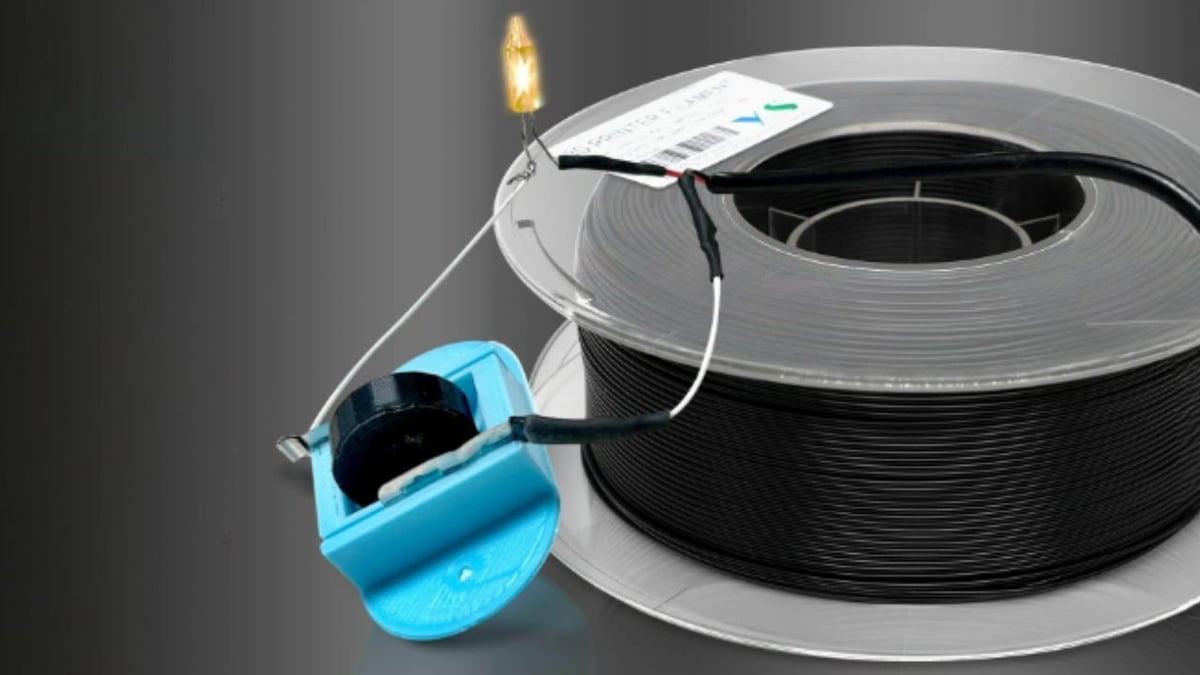
Yousu is a Chinese company specializing in researching, developing, and manufacturing 3D printing filaments as well as accessories. They have made a name for themselves with their range of affordable filaments, including conductive PLA and TPU filaments, which have attracted attention due to their affordability and promising properties.
Priced at approximately $50, their conductive PLA filament is the cheapest option on this list. The TPU filament will set you back just ~$10 more. While it doesn’t put a dent into your wallet and promises high conductivity with a resistivity of 7 Ω⋅cm, user reviews have been mixed. Some users have reported satisfactory performance and have found it suitable for their projects while others have encountered challenges with consistent resistivity and filament brittleness.
- Price/kg: ∼$50 (PLA); ~$60 (TPU)
- Sizes: 1.75 mm (PLA); 1.75, 2.85 (TPU)
- Resistivity: 7 Ω⋅cm
- Resistivity per axis: Not specified
- Nozzle temperature: 180-230 °C (PLA); 190-220 °C (TPU)
- Bed temperature: Not specified
ABC3D
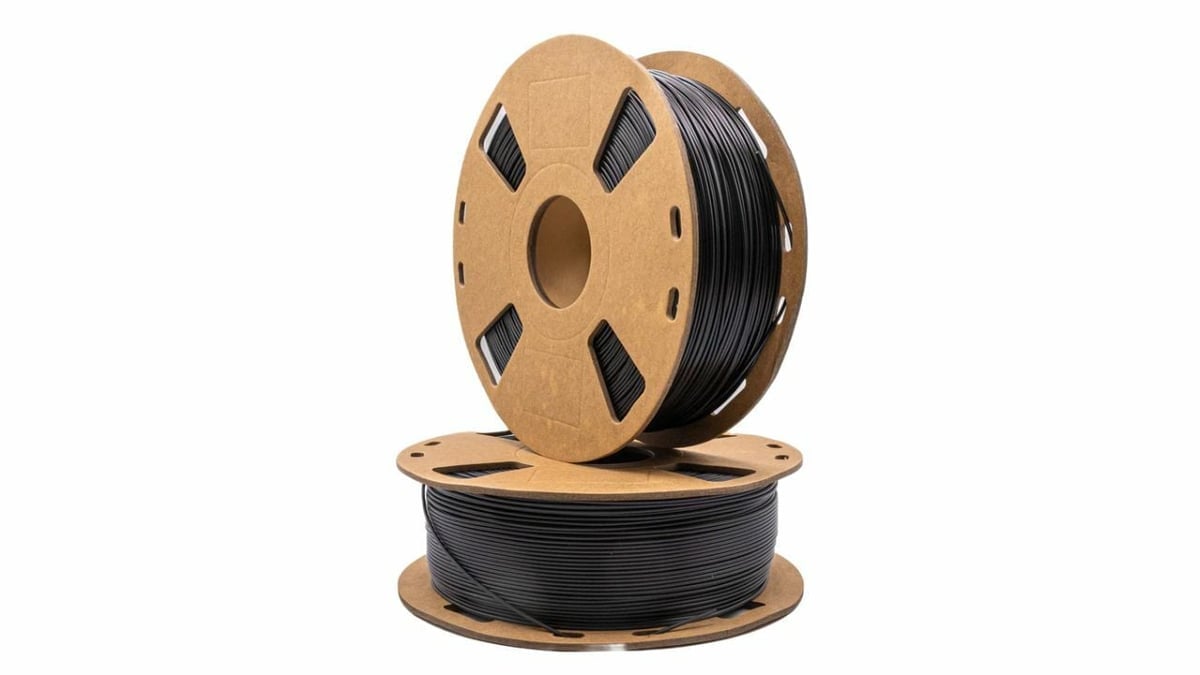
Based in Canada, ABC3D stands out as a company dedicated to producing environmentally conscious 3D printing materials that not only prioritize sustainability but also deliver amazing performance. Among basic filaments, pellets, and other special filaments, they also offer an electrically conductive filament.
Their electrically conductive filament uses PETG as a base material which is perfect for projects that need more elasticity and strength than PLA can offer. ABC3D mentions that their electrically conductive PETG filament exhibits minimal warping and shrinking. Moreover, they prioritized precision while engineering this filament, ensuring the print is smooth and accurate, making this filament a good choice even for those who are new to 3D printing.
ABC3D specifies that for a 10-cm segment of their 1.75-mm diameter filament, the resistance falls within the range of 2,000 to 3,000 Ω, resulting in a resistivity of 4.8 to 7.2 Ω⋅cm. This level of conductivity positions the filament as an excellent choice for various projects, including printing circuits, wiring LED lights, and crafting touch sensors.
- Price/kg: ∼$75
- Sizes: 1.75 mm
- Resistivity: 4.8-7.2 Ω⋅cm
- Resistivity per axis: Not specified
- Nozzle temperature: 195-215ºC
- Bed temperature: 60°C
3dk.berlin
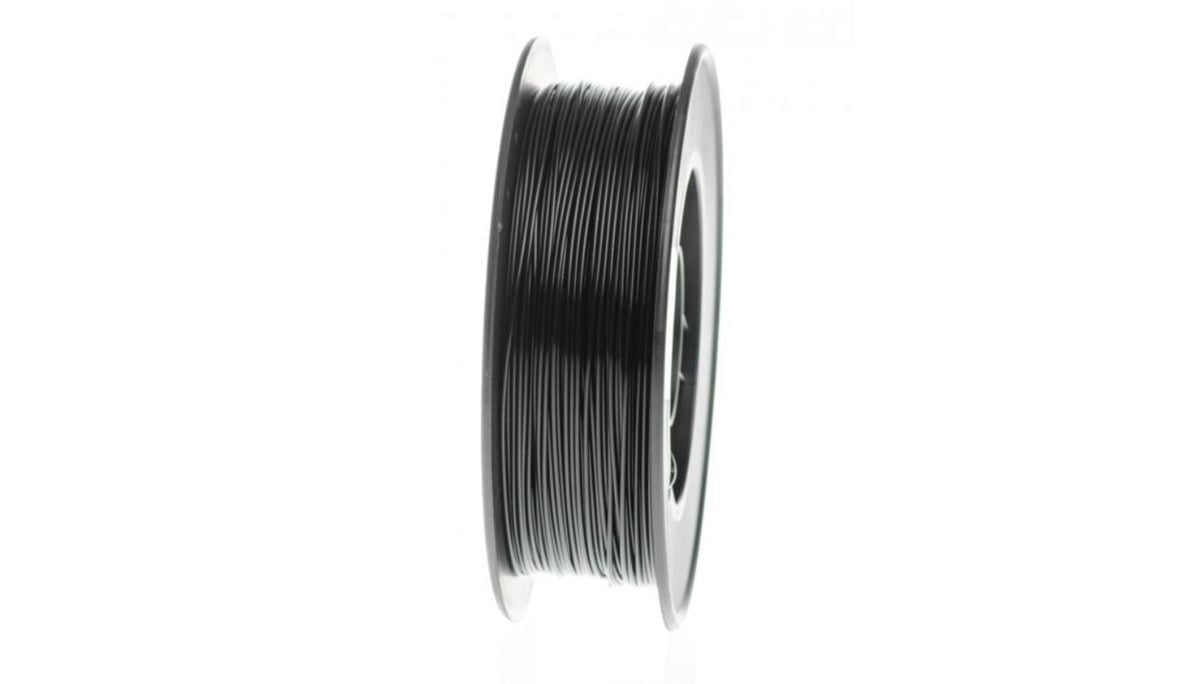
3dk.berlin is an online 3D printing supply store that sells filament, printers, extruders, and build plates. One of their filaments is a conductive PLA, known as 3dkonductive. According to the manufacturer, 3dkonductive has electromagnetic shielding properties and is anti-static.
This filament has a resistivity of 24 Ω⋅cm along the X- and Y-axes and 53 Ω⋅cm along the Z-axis. 3dk.berlin also states that it can be printed with a print speed of up to 90 mm/s, which is very impressive.
- Price/kg: ∼$115
- Sizes: 1.75 mm, 2.85 mm
- Resistivity: 24 Ω⋅cm
- Nozzle temperature: 200-230 °C
- Bed temperature: Up to 70 °C
Amolen

Amolen specializes in making unique filaments such as their glow-in-the-dark, color-changing, and shiny filaments. As part of their portfolio, the company offers an excellent and affordable conductive PLA. It has a safe voltage maximum of approximately 35 volts, which was confirmed through multiple tests.
Amolen states that their conductive PLA has a steady tolerance of just ±0.03 mm, and its raw materials are eco-friendly and sourced from the US. They say the filament is high quality and doesn’t warp, bubble, or jam, although a few reviewers noted that the filament wasn’t as conductive as advertised, so keep this in mind.
- Price/kg: ∼$115
- Size: 1.75 mm
- Resistivity: 1.42 Ω⋅cm
- Nozzle temperature: 220-250 °C
- Bed temperature: 0-50 °C
License: The text of "The Best Conductive Filaments of 2023" by All3DP is licensed under a Creative Commons Attribution 4.0 International License.
CERTAIN CONTENT THAT APPEARS ON THIS SITE COMES FROM AMAZON. THIS CONTENT IS PROVIDED ‘AS IS’ AND IS SUBJECT TO CHANGE OR REMOVAL AT ANY TIME.


